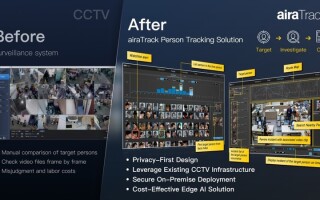Consumer electronics spur haptic technology market
January 30, 2017
Blog

Haptic technology is technology that recreates the sense of touch through vibration or other means. One of its earliest applications was in large airc...
Haptic technology is technology that recreates the sense of touch through vibration or other means. One of its earliest applications was in large aircrafts where controls surfaces were operated through a servomechanism system that provided negative feedback when it sensed error. The servo systems were modified with weights and springs that would send vibrations to the controller in the pilot’s hand whenever threats were detected. Modern haptic technology utilizes sensors to measure the amount of force exerted by the user on the user interface and then sends haptic feedback.
According to a global industry analysis of the haptic technology market, the market for haptic technology is growing at a fast pace, primarily owing to the growing demand for various consumer electronic devices globally. Haptic technology is now a common feature in most mobile handsets such as smart phones and tablets. It is also being used in various laptops and gaming consoles. The increasing penetration of the Internet of Things (IoT) coupled with rural penetration of internet in emerging economies has been boosting the growth of the smart phone, tablet, and laptop market. This in turn has been positively impacting the growth of the haptic technology market.
Haptic technology is also being utilized in vehicular electronics and medical electronics, among others. Furthermore, various research institutes and research and development (R&D) divisions of corporations have been focusing on improving haptic systems and developing newer applications for haptic technology. Considering all the positive impacts of the above mentioned factors, the market for haptic technology is expected to grow at a fast pace.
The global haptic technology market can be segmented on the basis of feedback into force and tactile. Tactile haptic technology is more prevalent, owing to its presence in smart phones, tablets, laptops, and other consumer electronic devices. On the basis of components, the haptic technology market has been segmented into actuators, controllers, and others.
By end-use industry, the global haptic technology market is segmented into aerospace and defense, automotive, healthcare, consumer electronics, and others. Each of these segments are further segmented into commercial and research. Research is being conducted on haptic technology in all these sectors and also commands a large amount of revenue share.
The global haptic technology market has been further segmented into five regions: North America, Europe, Asia Pacific, South America, and Middle-East and Africa. In terms of revenue, Asia Pacific had the largest market share in 2015, followed by North America and Europe. Growing smart phone penetration, increasing usage of internet-enabled devices, and large user base for consumer electronics are the primary reasons Asia Pacific is the top revenue garner. North America is the second highest revenue garner in the haptic technology market. The growth rate of haptic technology is also good in Latin America, with increasing penetration of smart phones and tablets in the region.
The major companies of the haptic technology market globally are Senseg Oy (Finland) Force Dimension (Switzerland), Haption SA (France), Texas Instruments, Inc. (U.S.), Ultrahaptics (U.K), ON Semiconductor Corporation (U.S.), SMK Corporation (Japan), Microchip Technology, Inc. (U.S.), Precision Microdrives, Ltd. (U.K.), IMAGIS Co., Ltd. (South Korea), and Synaptics Incorporated (U.S.) among various others. Some of the strategies adopted by these companies, to remain competitive in the market, includes R&D, mergers, acquisitions, and partnership with other companies.




